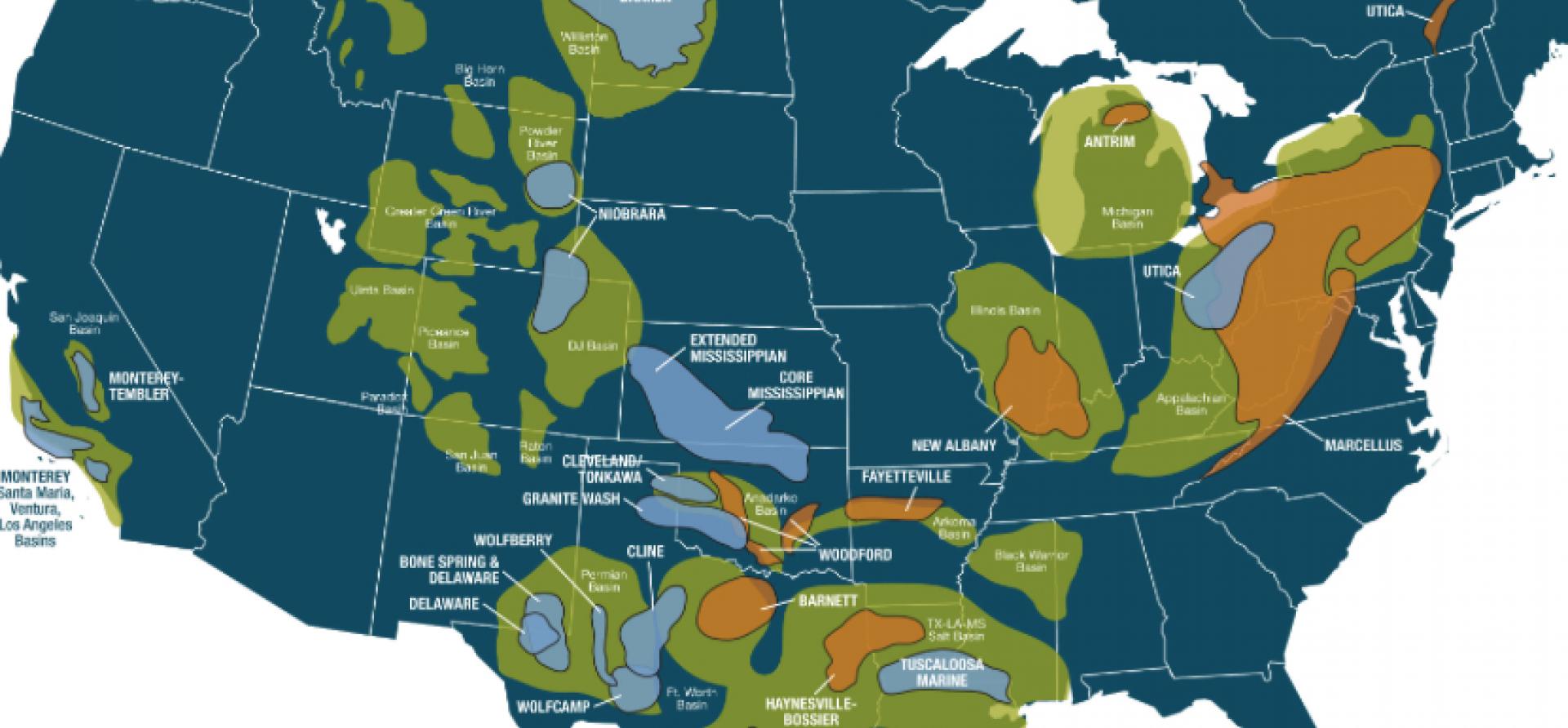The Peril in Shale-Producer Debt (CLR, DVN, PXD, RRC)

Everybody knows interest rates have been low for years now, and that they’re low because the Fed is keeping them there.
The trend is exceptionally evident in the oil and gas industry, where overall debt has grown threefold since 2006. About 75 percent of the recent U.S. “shale revolution,” according to Standard & Poor’s, was funded by junk debt, which pays investors a higher return in exchange for taking on greater risk.
It’s worth emphasizing that the almost blindingly fast development of American shale resources has been fueled by cheap debt, not cash flow. And cheap debt carries both potential risk and reward.
It’s readily apparent in their debt-to-equity ratios that some shale companies have deliberately chosen debt as their primary means of finance. This makes sense because debt is so inexpensive lately and because equity, on the other hand, has always been an expensive way to raise money. But like all else in life, debt must be managed in moderation, and that’s not always been the case in the shale boom.
A healthy corporate debt-to-equity ratio is less than .80. But financial reports from Continental Resources, Devon Energy and Pioneer Natural Resources, and Range Resources show that three of them are not even in this range, and Pioneer is barely within bounds.
Another way of analyzing a company’s debt load is to divide net income, which is total earnings or profits, into long-term liabilities, a formula that reveals just how long it would take to pay off company debt. In Range’s case, it comes out to about 20 years; for Continental, it would take about 11 years. And that’s if they use 100 percent of their profits year in and year out to pay off that debt.
I’m not arguing that debt is a bad thing, but it must be taken on with prudence. Conventional wisdom is that debt is a perfectly sound way to leverage assets, and this could prove to be the case in the shale industry. But that works only if natural gas and oil prices remain high enough for producers to meet their debt-service obligations. If prices fall too far, heavily indebted companies can quickly find themselves on the wrong side of the equation. This is especially true with shale producers, because shale oil and gas wells are short-lived. No shale producer can stay in business without continuous and prolific drilling, which requires continuous and prolific capital expenditure.
Shale oil or gas fields by their very nature have extraordinarily high decline rates. This is true of the fields that produce tight oil coming out of the Bakken formation of North Dakota and Alberta, the Eagle Ford formation of south Texas and the Permian Basin of New Mexico and west Texas. It’s true also of gas coming out of formations like the Marcellus Shale underlying Pennsylvania and parts of Ohio and the Barnett Shale of north-central Texas. Steep production-decline rates makes is very difficult for operators to sustain a rising production profile—or even to maintain a flat one—for any reasonably length of time. Couple this reality with a drastic fall in price and you have the perfect storm.
It’s a storm that can create dilemmas. If a company cuts capital expenditures, its production will plummet. If production declines, there isn’t as much money available to meet debt service. A vicious cycle ensues.
Just such cycles have occurred very recently. An influx of shale production drove natural gas prices below $2/ mcf in January 2012, causing companies to incur massive write-downs in shale assets. A similar situation in 2013 saw $35 billion in write-downs among just 15 shale operators.
When OPEC announced in late November that it would not cut production to shore up prices, much of the industry cried foul. The fact is, OPEC production had actually declined already over the previous two years, and prices had fallen so low—and market equilibrium had been disrupted so badly—because of burgeoning production from U.S. and Canadian shale companies.
The U.S. shale industry ludicrously blamed OPEC for low prices that persist today, failing to appreciate that business is business and philanthropy is something else.
Shale operators will almost certainly continue to increase production even with oil prices now well below $45 a barrel. Many producers have no choice because they need revenue to support their debt-service payments. And this fierce cycle of production will merely worsen the glut.
Deborah Lawrence is an IEEFA consultant and executive director of the Energy Policy Forum.















